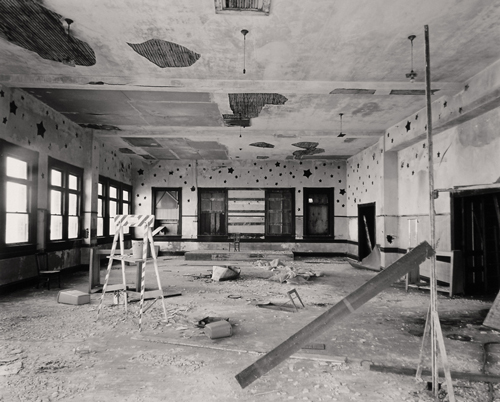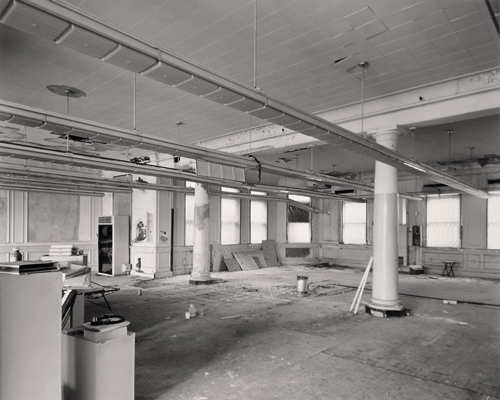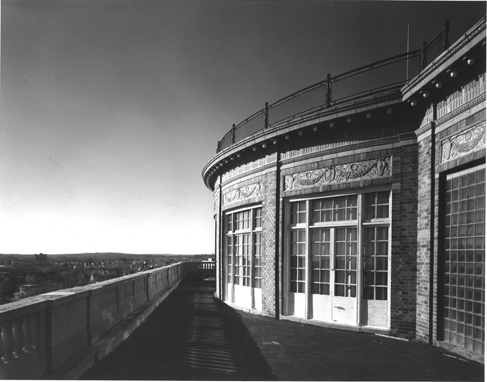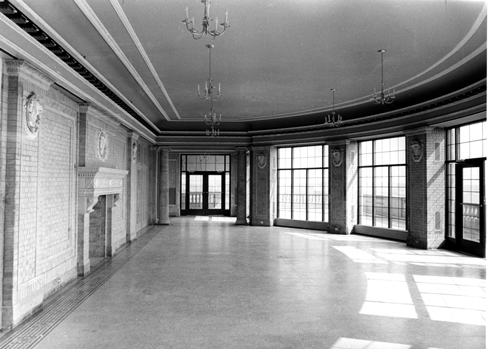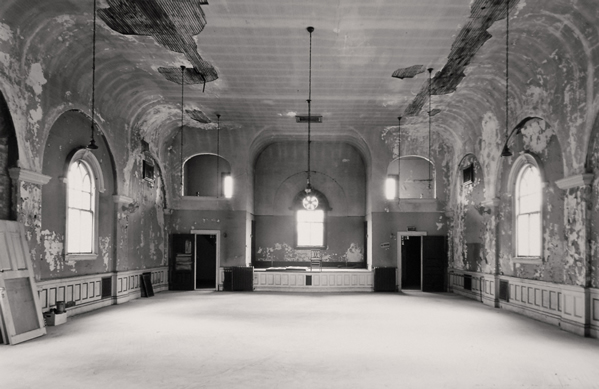
The very word ballroom has a magical, time imprinted, quality. Fred Astaire gliding in top hat and tails, Ginger floating in chiffon and pearls. Lush black and white images of Bogey in a white smoking jacket leaning across the piano in Casablanca, Bette Davis and
Paul Henreid at the ship’s rail smoking by moonlight. Cinematic elegance and celebrity mimicked by the young all over. Shop girls and secretaries running in from the chill night air as Ingrid Bergman or Barbara Stanwyck clutching their dancing pumps to their breasts. Their permed hair lacquered to perfection, their eyes bright with excitement. Nervous young men in their cheap ‘depression’ suits playing William Powell or Cary Grant to the girl’s Myrna Loy, their brilliantined hair clipped military short, their dancing shoes gleaming like polished chrome. The orchestra starts up with Glen Miller’s String Of Pearls or Benny Goodman’s Sing Sing Sing or Ellington’s Take the A Train. The Duke, how elegant is that?
Until the Twentieth century dances were private trimmings for the very wealthy in their gilt corniced ballrooms, or something for gin soaked ruffians in their lowly dives. The Apache and the Tango were still confined to the brothels of Paris and Buenos Aires.
Around 1910 Irene and Vernon Castle began to change all that, touring the country, giving exhibition dances – actually holding one another in their arms, in public, an outrage to middleclass values of the time. But by the start of the First World War dancing was all the rage. The first moves came thick and fast and took
a decidedly animal turn – The Fox Trot, Turkey Trot, Chicken Reel, Grizzly Bear, Bunny Hug, Camel Walk.
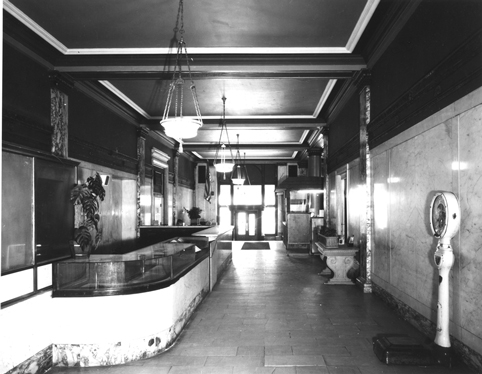
LMohegan Hotel, Ballroom lobby, State Street, 1980. Photograph by Tom Hahn
Large photograph at top: Lyric Hall, State Street. Photograph by Ted Hendrickson
Cronin Building, State Street. Photograph by Ted Hendrickson |
Espisito Building, Bank Street. Photograph by Ted Hendrickson |
By 1920 dance had become so big that The Winter Gardens in Blackpool, England hosted the first World Championship of Ballroom Dance, and still do to this day.
In the 1920’s New London was quite the glitter town with numbers of Ballrooms and dance halls opening up on State street, Bank street, Union and Main streets. White ballrooms, black ballrooms, mixed dance halls. It was the draw for miles around, a port with plenty of young sailors, and it was time for change. The war was over, women had the vote, it was time to boogie. Flappers, those wonderfully outrageous young women who flaunted convention by wearing make-up, short bobbed hair and revealing outfits, brought in the Charleston, the Shimmy and the Blackbottom. What better way to express the explosive energy of the time. Everything must have seemed so new – automobiles, airplanes, radio, movies, jazz. Scott Fitzgerald’s Jazz age was alive and well in New London.
Most of the ballrooms and dance halls have gone now, or lie crumbling as ghostly images of themselves their silver stars peeling from the walls, their glamour holding in the memories of the dancers, the lovers of rhythm, and lovers. Their memory would have faded too had it not been for lively mind of Janis Mink, an art historian and curator. Her innovative gallery, The Burnished Chariot, was on the ground floor of the Crocker Building from 1999 to 2002. Like many New London natives Janis had heard her parents stories of the local dance halls and theaters, yet she was amazed when, as her aunt lay in the Hartford funeral home, an elderly woman appeared, having driven up from New London, with a corsage for her dancing friend. Sixty years on it was still a most wondrous time in her life.
Imagine Saturday night on State Street. A regatta in the harbor.
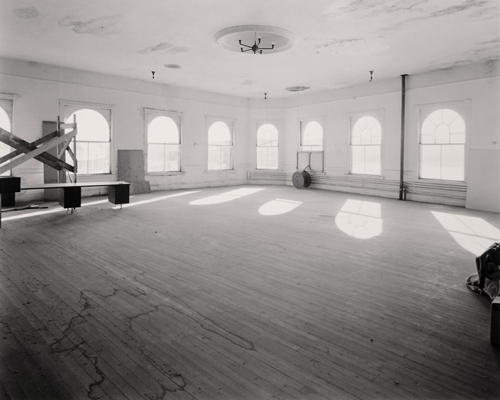
Espisito Building, Bank Street. Photograph by Ted Hendrickson
|
|
The big copper doors of the Crocker House Ballroom open to the night, the music spilling into the crowded streets. Bright young things jostling, giggling,strolling from dance to dance. To the Bacon Building maybe, or a party crossing the street to the Lyric Hall.
“In the Fox Trot does the left go back first ... or the right?”
“Billy’s shipping out tomorrow.”
“Will you miss him?”
“I don’t know.”
“Don’t let him touch you till he’s proposed.”
Up the street to the Mohegan Hotel where a penthouse ballroom overlooked the city. Aging dancers remember the excitement, huddled in the elevator as it rose to the top floor, filled with anticipation of the burst of glamour and music that would greet them as the doors opened on the lobby and the city lay spread all around.
And as Hollywood danced through the thirties and forties so America danced. The Lindy Hop, the Jitterbug, Salsa, Rumba, Tango, Swing. The lifespan of ballrooms in general seems to mirror the life of black and white movies. They both fade into decline with growth of television and cinemascope. In 1926 there were more than twenty ballrooms and dance halls listed in the New London Directory. Janis Mink spent three years gathering information and documenting these dance halls, with the help of photographers Ted Hendrickson and Tom Hahn (whose studio was once the Colonial Ballroom), and as one of the last shows
at her gallery (by then moved to Harris Place) she displayed the photographs and the documents she had found, and as a lover of dance herself she naturally included dance lessons.
In the course of her research Janis received a letter from Cathy LaVallee who described stories and memories of how Malcolm X, then a teenager working as a porter on the New York – Boston line, would hop the train, change his suit and go dancing at Miss Lillian Gilliam’s ballroom. It could just be rumor, says Janis, but the detail was so vivid and compelling that I commissioned her to paint a picture. Besides the lively ballroom of the 1940’s, the painting features an active Charles Street Jail, variations on the Columbus Statue – one being Malcom X himself - and that same railroad line disappearing over the Gold Star Memorial bridge. Janis Mink feels that like painting, a dancer may be expressive, or contained, realistic or fantastic. Ballroom dancing delivers you to another sphere. It distinguishes dancers from ordinary life and time, and gives them a separate meaning. Ballrooms belong in every city filled with hope.
And that desire to gather together and dance, primal as it is, is leading to a revival of ballroom. In the past few years movies like Strictly Ballroom and Shall We Dance gained audiences far larger than their ‘small picture’ status would imply. Now television shows – Dancing with the stars and America’s Ballroom Challenge are showing in prime time. The formality and stiffness that came into ballroom dance in the fifties, as in society, is largely gone. Now the professional dance costumes are as daring as any time since the flappers, often little more than eyeliner and a thong. Locally the Crocker House has remodelled its ballroom, The Wauregan Hotel in Norwich has redone its grand ballroom, a Fred Astaire Studio in Mystic and, of course, the Casinos offer multiple dances floors.
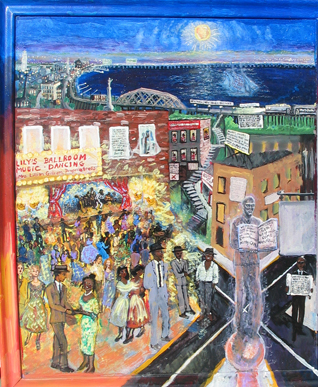
Lily’s Ballroom by Cathy LaVallee, Acrylic on board, 2002.
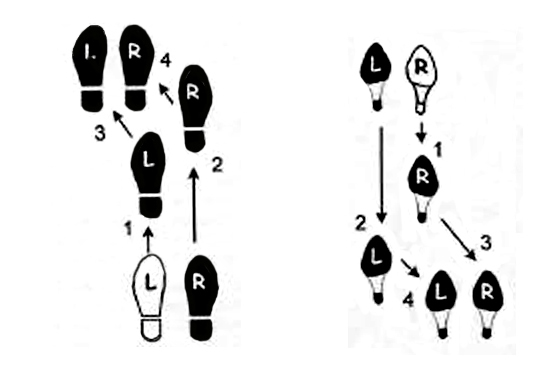
Basic Fox Trot Steps

